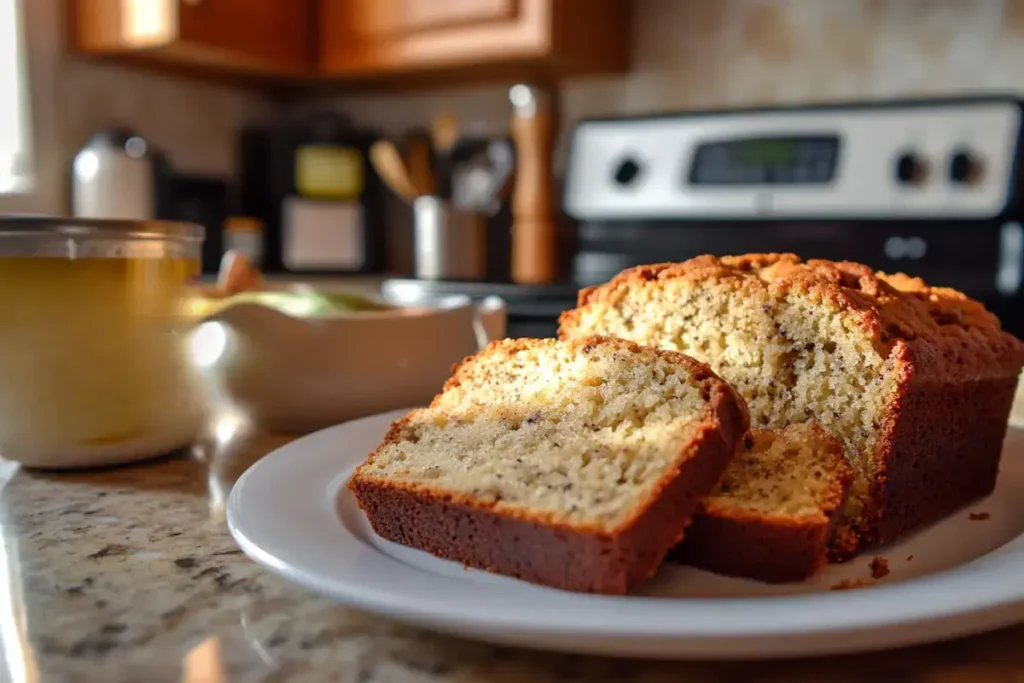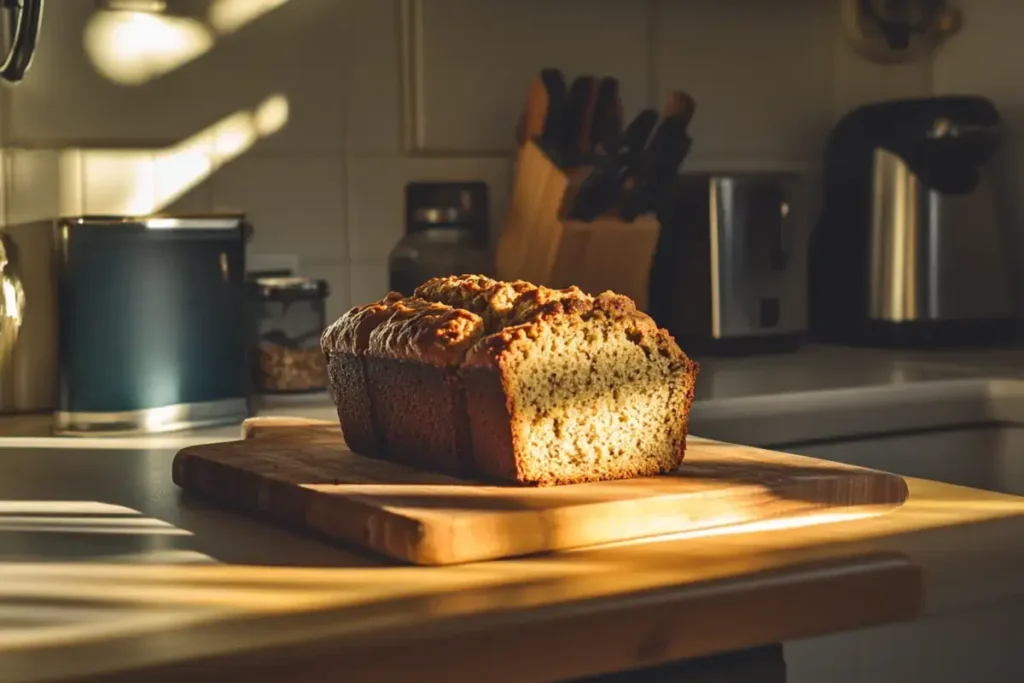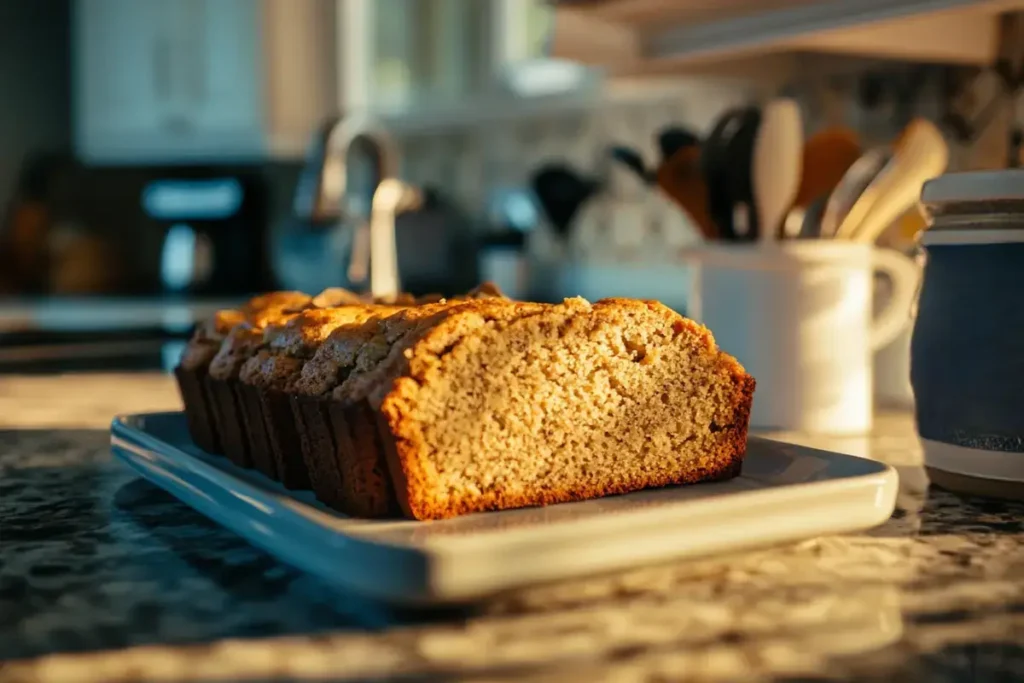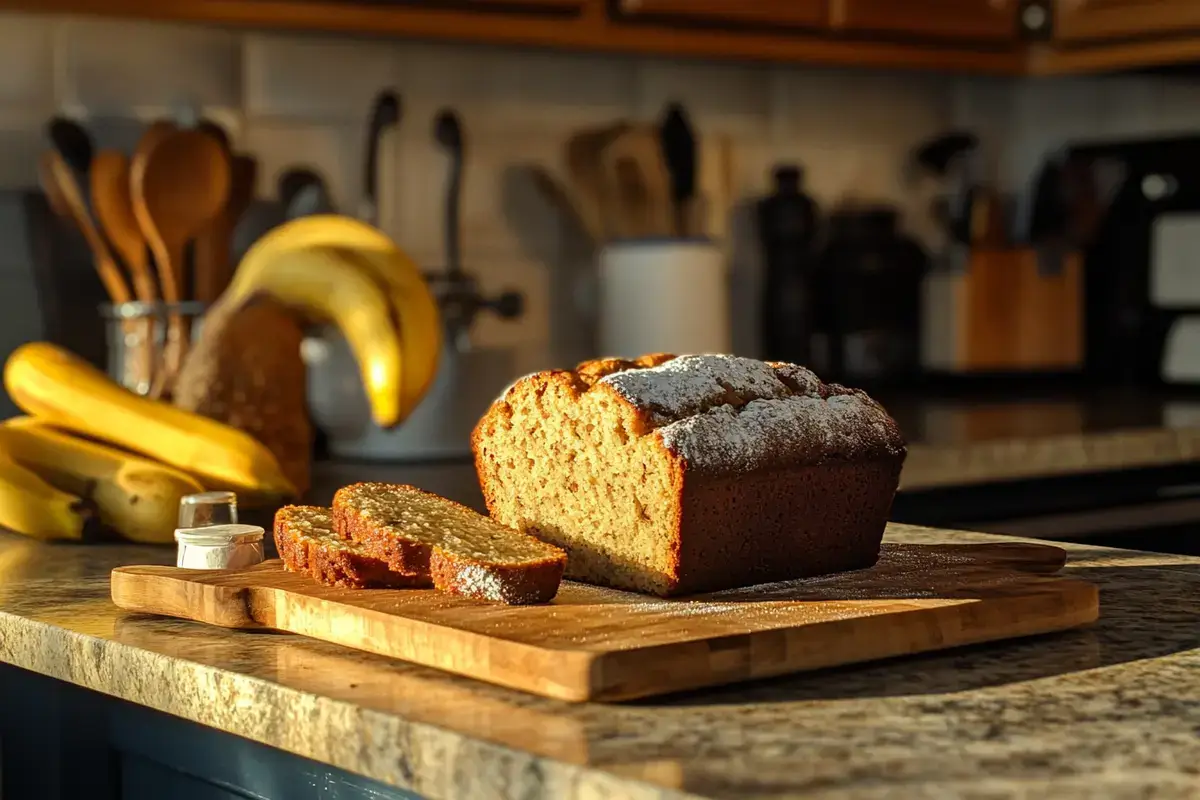The age-old debate continues in my cooking classes from San Francisco to Boston , is that slice of banana bread a nutritious breakfast or glorified cake? After analyzing hundreds of recipes and working with nutritionists throughout my culinary career, I’m here to give you the honest truth about banana bread’s place in a balanced diet.
The Nutritional Reality Check
Traditional banana bread sits somewhere between a healthy snack and dessert. A standard slice (about 60g) from most recipes contains:
- 200-250 calories
- 8-12g fat
- 30-35g carbohydrates
- 20-25g sugar
- 3-4g protein
- 1-2g fiber
These numbers reveal the truth: conventional banana bread is essentially a sweet quick bread with modest nutritional benefits. However, the story doesn’t end there.
The Good: Nutritional Benefits
Natural Banana Benefits
Bananas bring legitimate nutrition to the table. Each medium banana in your bread provides potassium (450mg), vitamin B6, vitamin C, and magnesium. These nutrients support heart health, muscle function, and energy metabolism. During my nutrition certification in 2019, I learned that baked bananas retain most of these benefits.
Energy and Satiation
The combination of carbohydrates and small amounts of protein provides sustained energy. When I worked morning shifts in busy NYC restaurants, a slice of banana bread with almond butter kept me satisfied for hours , something a commercial muffin never achieved.
Better Than Commercial Alternatives
Homemade banana bread beats store-bought muffins and pastries. You control ingredients, avoiding preservatives, high-fructose corn syrup, and trans fats common in commercial baked goods. Most coffee shop muffins contain 400-500 calories with minimal nutritional value.

The Not-So-Good: Health Concerns
High Sugar Content
Most recipes call for ¾-1 cup added sugar beyond the bananas’ natural sweetness. That’s roughly 6-8 teaspoons of sugar per slice. The American Heart Association recommends women limit daily added sugar to 6 teaspoons, men to 9 teaspoons. One slice could max out your daily allowance.
Refined Flour Issues
Traditional recipes use white all-purpose flour, providing calories without significant nutrients or fiber. This causes rapid blood sugar spikes, particularly problematic for diabetics or those managing weight.
Calorie Density
At 200-250 calories per modest slice, banana bread is calorie-dense. Many people eat 2-3 slices, consuming 600+ calories , equivalent to a full meal. I’ve observed this pattern at countless brunch gatherings across America.
Making Banana Bread Healthier
Through years of recipe development and testing with my readers at boldyrecipes.com, I’ve discovered modifications that significantly improve nutritional value without sacrificing taste:
Smart Substitutions
- Replace half the all-purpose flour with whole wheat or oat flour (adds fiber and nutrients)
- Reduce sugar by ⅓ and add extra vanilla or cinnamon for flavor
- Swap butter for Greek yogurt or mashed avocado (reduces saturated fat by 60%)
- Use maple syrup or honey instead of white sugar (provides trace minerals)
Power-Up Additions
- Add 2 tablespoons ground flaxseed (omega-3 fatty acids and fiber)
- Include ¼ cup chopped walnuts (healthy fats and protein)
- Mix in 1 tablespoon chia seeds (fiber and antioxidants)
- Fold in ½ cup blueberries (antioxidants and vitamins)
My Professional Verdict
After teaching nutrition-focused baking classes in health-conscious cities like Los Angeles and Portland, here’s my balanced perspective: banana bread isn’t inherently healthy or unhealthy , it depends on the recipe and portion size.
When It’s Relatively Healthy:
- Made with whole grain flour
- Contains reduced sugar
- Eaten in moderation (1 slice)
- Paired with protein (nut butter or Greek yogurt)
- Homemade with quality ingredients
When It’s Unhealthy:
- Made with only white flour and butter
- Contains cup+ of added sugar
- Eaten in large portions
- Covered in butter or cream cheese frosting
- Store-bought with preservatives and additives
The Bottom Line
Standard banana bread is a treat, not a health food. However, with thoughtful modifications, it can be part of a balanced diet. I enjoy traditional banana bread occasionally and modified versions more frequently. The key is awareness and moderation.
For daily consumption, I recommend my healthier version on boldyrecipes.com that reduces sugar by 40% and incorporates whole grains. For special occasions, enjoy traditional banana bread without guilt , food is about pleasure too.

FAQs
Q: Is banana bread healthier than regular bread?
A: No, regular whole grain bread is healthier with less sugar and calories; banana bread is more comparable to cake.
Q: Can diabetics eat banana bread?
A: Traditional recipes spike blood sugar; diabetics should try low-sugar versions with almond flour in small portions.
Q: Best time to eat banana bread?
A: Post-workout or as an afternoon snack with protein; avoid as standalone breakfast due to sugar content.
Q: How much banana bread is too much?
A: One slice daily of modified healthy version is fine; limit traditional banana bread to 1-2 slices weekly.

Bake mindfully!
Jessika

